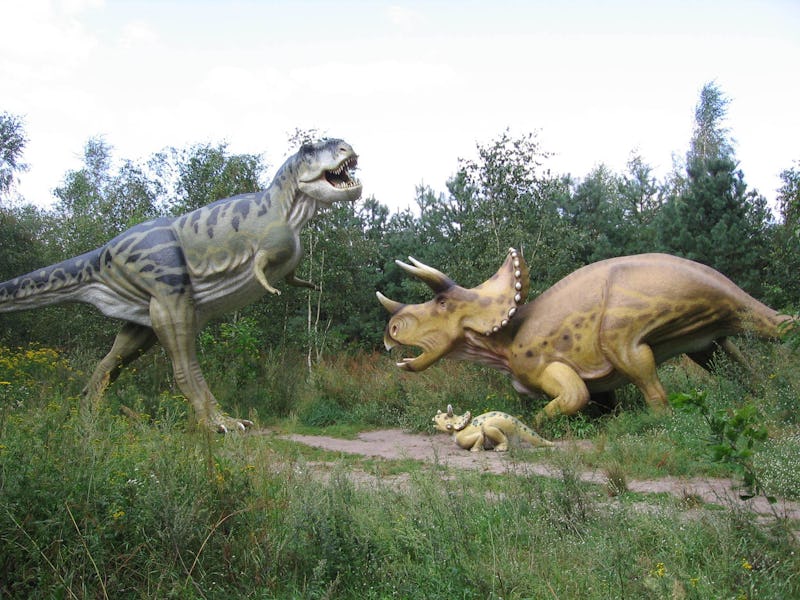The World May Never See Montana's Dueling Dinosaur Fossils
They are locked in a secret storage locker, away from scientists and the public.

More than a decade ago, Clayton Phipps made one of the most amazing fossil discoveries in the history of paleontology. He was out prospecting for bones in Montana in the summer of 2006 when he came upon an exposed piece of a huge horned dinosaur. After a great deal of digging, it became clear that the animal was not alone — it had died suddenly, locked in battle with a small tyrannosaur.
The two animals may have knocked into a cliff in their deadly fight, dislodging a wall of sand that entombed them for the next 67 million years. The fossils are incredible in their completeness, and for the fact that all the bones are in their proper place, as they would have been in life. It is the sort of fossil that people would line up for hours to see, if not for the fact that it has never been on public display — and there’s no guarantee that it ever will.
Today, the Montana Dueling Dinosaurs are trapped in the middle of an ongoing bone war that pits paleontologists who believe natural history should not be for sale against commercial fossil hunters trying to make a living. The July/August 2017 issue of Smithsonian Magazine tells the story.
Phipps, also known as the Dinosaur Cowboy, is from one perspective an enemy of science who first destroyed important paleontological objects and then held them for ransom. “As far as I’m concerned, those specimens are scientifically useless,” famed Montana paleontologist Jack Horner tells Smithsonian, because commercial fossil hunters aren’t trained to collect important information about the context of where they were found. He’d rather commercial dinosaur markets eliminated, as is the case in fossil-rich countries like Canada.
From another perspective, Phipps saved these fossils. Left undiscovered, they would have inevitably eroded out from the side of the cliff where they were found until nothing was left but dust. The millions he asks ensures fair payment for the discovery, recovery, and preparation of the fossils, which involved expensive and time-consuming work by a large team of people over several years.
The debate over the price of fossils has reached a bit of a stalemate in recent years. Commercial fossil dealers just haven’t been able to fetch the high prices they are looking for, and many of the most impressive specimens go unsold at auction. This happened to Phipps in 2013 when he put the Montana Dueling Dinosaurs up for sale. The only bid was $5.5 million — half what Phipps was expecting and less than he was willing to part with them for.
Museums simply can’t come up with the prices that dealers expect, and the private market for the highest-end fossils is equally thin, perhaps as the rich and famous become more aware of the ethical complications of keeping dinosaurs away from scientists and the public. Nicolas Cage, for one, returned the $270,000 skull of a tyrannosaur after learning it had been exported illegally from Mongolia, a country with a major dinosaur poaching problem.
The fossil market probably won’t rebound anytime soon to where it was in 1997, when a T. rex named Sue sold to the Field Museum of Natural History for $7.6 million. Fossil dealers with exceptional finds in their vaults, like the Montana Dueling Dinosaurs, will sit on their investments indefinitely or come down to a price where buyers can be found.
That might already be happening. Phipps told Smithsonian shortly before the article went to print that he is in renewed negotiations with a museum for the sale of his treasure. The greatest death match the world has never seen might soon be revealed.